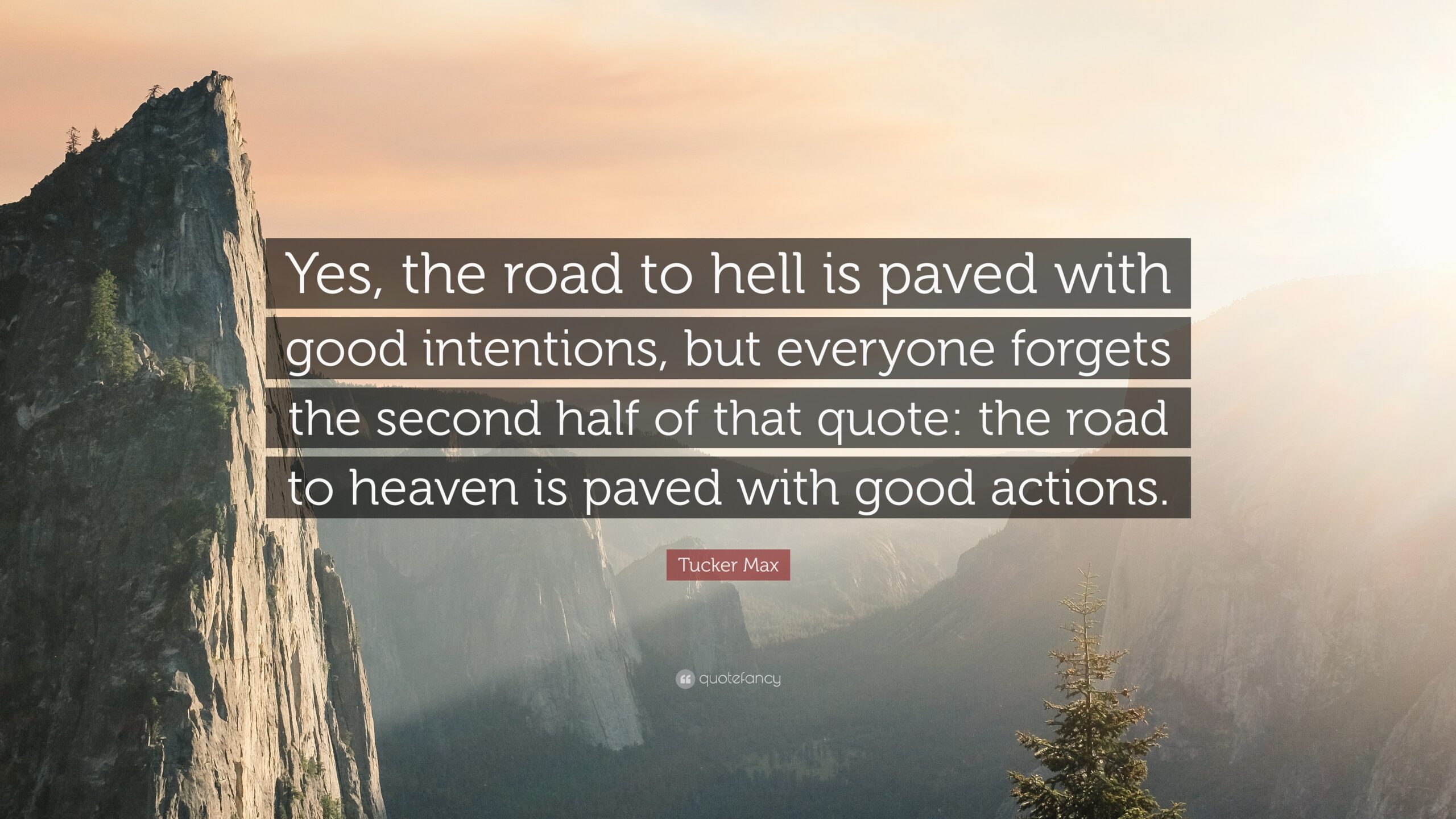People & Culture: Doubts & Sacrifices on the path to business harmony
Transcript of a LinkedIn Live session organized by Olga Potaptseva, CCXP, CCX with Nick Van Langendonck
Olga: Many organizations declare their customer-centric intent, but struggle to live their purpose. Why do you think it happens and what can help them take the first steps towards a customer-centric operating model and culture?
Nick: Why do I think that happens? Well, Olga, because the road to hell is paved with good intentions. Simply intending and declaring to be customer-centric is not enough. Before communicating such big promises, one must first consider the consequences and ensure that their actions following this declaration align with the intentions.
I give the example of Daddy Kate in my book. Daddy Kate is a printing company. The printing business overall in Belgium shrank by 50% in volume in the last decade. The result is that 99% of printing companies opted for a cost-efficient strategy, aiming to print at the lowest cost possible. Many of them went bankrupt or were bought.
Daddy Kate, on the other hand, kept growing. Unlike 99% of their competitors, they became religious about customer and personal service. The consequence is that Daddy Kate is not the most cost-efficient printing factory. The price they have to pay for providing flexibility to their customers is that they are sometimes not efficient. And they accept this consequence.
Whereas in many organizations, I see a declaration of being customer-obsessed and efficient in everything. When push comes to shove, it’s cost efficiency that drives the organization and the customer has to give.
In other words, they are not religious about it. They see customer-centricity as an option that you can sometimes activate and sometimes deactivate. And their intentions are declared, but actions are not aligned, and this is very confusing for everyone. It’s the opposite of harmony.
So, my advice on the first step is simple: be honest about what your organization is really about. Everybody knows people are not stupid. If the Belgian Railway Company would communicate they become customer-centric and agile in 2 years, it’s like, really. Nobody likes false promises.
I sometimes feel that executive committees declare what they think people want to hear, that it’s customer-centric washing.
And if you are really dedicated to becoming a customer-centric organization, then you might want to consider first making some changes, getting some first results, and only then making big declarations combined with some really big changes that impact everybody and prove that you really mean it.

Olga: In your book you draw the inspiration from the Bible to show the organisations how to be true to their ultimate goals. One of the chapters is looking at the concept of sacrifices. How will sacrifices help us be more customer-centric?
Nick: Well, firstly, I want to invite everybody joining this LinkedIn Session to set aside any preconceived notions about the Bible and view it in its most basic form. It’s simply a collection of texts about various aspects of life, written by our ancestors in the Middle East over a period of 1000 years between 3000 and 2000 years ago. It’s just their analysis of what it means to live a good life.
Secondly, I also want to underline that although I’ve studied organizations obsessively for almost 15 years and these texts for almost 7 years, I’m only scratching the surface.
That being said, I’ve observed a recurring pattern in the biblical texts where human characters have to sacrifice something they love that holds them back from realizing their full potential. There seems to be a correlation between the weight of the sacrifice and the scale of potential being realized.
We see this, for example, with Abraham who’s willing to sacrifice his own son. We see this with Mary giving birth to a son, knowing his grueling destiny. We see this with Jesus who sacrifices his own life. But we also see this with Olympic athletes who sacrifice their lives for a gold medal. And that’s why we applaud them when they’re standing on the podium. It’s because we just witnessed them doing something nearly perfect. And we’re not just applauding for the act itself, but also because we all know the sacrifices they had to make to realize their potential.
And I observe a similar pattern in organizations. Many sacrifices need to be made to become radical customer-centric organizations:
- The CEO has to sacrifice the idea that he or she is the most important person in the organization. They are not; it’s the customer.
- As a consequence, they might have to sacrifice their huge offices and parking spaces so that they can be used to invite customers.
- What they, and by extension managers, think should be is sacrificed, and what’s actually being done is what the customer thinks.
- Frontline workers have to sacrifice the comfort of not having to take responsibility.
In short: I observe the sacrifice of status, identity, ideas, power, perks, and rewards. The more individuals that make the necessary sacrifices, the closer the organization comes to its ideal state of harmonious customer-centricity.
And this ties back to the first question: if you’re not willing to make these sacrifices, you will never reach your potential of being a super customer-centric organization. The other side of the coin is, the more sacrifices you’re making, the higher chances for success are.
To make it concrete with an example: In the programs of the Unbossers Network, I cohost these workshops together with Klaas Ariaans. For six years, he transformed the consumer side of ABN Amro, a famous bank in the Netherlands, to a 100% digital, anytime, anywhere customer-centric banking model. He cut costs by 40%, increased the NPS and the total revenue.
Here are just three of many sacrifices they had to make in order to get there:
- Klaas had to be willing to sacrifice his own job. If this transformation was not a success, he would have been fired after 25 years of service to the bank.
- They sacrificed 250 of 275 managers who either repositioned in the bank or paid to leave the bank in order to build an org structure based on mastery rather than management.
- In order to become fully digital, they sacrificed more than 1000 brick and mortar bank offices.
Want to learn more about the journey of Klaas Ariaans at ABN Amro:
Olga: What communication tools can help leaders engage the rest of the organisation? How can the flipped pyramid concept help people better align with customer-centric goals and values?

Nick: Well, let’s delve into the concept of the pyramid first. I want everyone to understand the significance of this ancient visualization and why representing an organization in a pyramid shape is far from trivial.
Pyramids are symbolic of mountains. Throughout human history and across cultures, mountains have held a special significance in how we structure and understand hierarchies of value and meaning. They’re seen as the meeting point between earth and heaven, where reality and potential converge. We often use phrases like “looking up to” or “looking down on” to denote admiration or disdain.
For instance, in biblical texts, the Garden of Eden is depicted as a successful world, with humans, animals, and plants living harmoniously atop a mountain. Whatever is represented at the peak of the mountain symbolizes the pinnacle of success. Think of the Pharaoh at the top of the Egyptian pyramids, almost godlike in stature, or the all-seeing eye on the pyramid on the one-dollar bill, representing the highest form of wisdom and knowledge.
Now, let’s apply this to how we visualize our organizations. Typically, we position the CEO at the apex of the pyramid, consciously or subconsciously communicating that reaching the CEO position is the ultimate success. Career development is directed towards vertical advancement, and proximity to the management team is often seen as an achievement.
So, how can the flipped pyramid concept help people better align with customer-centric goals and values? In my opinion, it’s not about flipping the pyramid itself, but rather redefining success. A fulfilled customer collaborating harmoniously with the organization becomes the new definition of success. Therefore, those closest to the top of the pyramid are the craftsmen, the workers who create products, deliver services, and maintain customer relationships.
Career development and success should be focused on mastering skills to fulfill customer needs, rather than managing people and resources. The foundation of the pyramid is reserved for those who create the context for this collaboration to flourish. They are the servant leaders who sacrifice status, power, and recognition for meaning, fulfillment, and impact.
In what ways can leaders balance the autonomy and reward system within their teams to encourage customer-centric behavior, while also addressing the need for sacrifice and alignment with organisational goals?
Nick: The question is directed to the leaders. I’m not a fan of this link that’s constantly made between organizational change and leaders. Yes, they have hierarchical power, but you would be surprised by how powerless they feel when it comes to realizing their ideas. Because to me, this question comes down to the shared responsibility to create an organization in which as many people as possible experience a state of flow. To me, an organization where autonomy and reward are balanced, and sacrifice and alignment are addressed is like a modern Garden of Eden where everyone works with heart and soul. Where everyone finds themselves in the optimal zone of challenge and skill, in which work is experienced as effortless and fulfilling.
This idea of flow was first described by American-Hungarian psychologist Mihály Csíkszentmihályi, who states that experiencing the five elements of flow. And I’ll let everybody listening judge for themselves to what extent their workplace meets these criteria:
- Context of regular concentration on work. That’s already a good example of why this is a shared responsibility. Imagine I work in the Belgium branch of a global corporation with HQ in the US. And I work in the marketing team. There’s only so much the global CEO can do. Whereas, if you are my colleague and I see you chasing emails, chasing meetings, chasing deadlines, I can ask you how I can help. How can we create more space. How we together can block projects coming from global, etc.
- Clear goals, rewards, and immediate feedback. Again, clear goals and rewards, that’s typically the role of leaders, but in my opinion, goals and rewards should also be discussed in teams. But immediate feedback, again, using the same example as before, there’s only so much my global CEO can do, but I, and everyone listening here in the call, can close this LinkedIn session, turn to their colleagues, and give them immediate feedback.
- Intrinsic value in the work experience. You find value in going to work, working with colleagues, getting work tasks done, etc. That’s even a better example, that’s a personal responsibility. No leader can make you feel intrinsic value.
A balance of challenge and skills. If challenges exceed skills you panic, if skills exceed challenges, you become lazy. Mainly a personal responsibility to skill yourself that you can take on bigger challenges, and also to give immediate feedback when challenges are too big or not big enough - Sense of having self-control over the work you do. You make yourself the necessary changes in order to reach your goals. There indeed, leaders can have a lot of impact, by being really clear on what people need to achieve and giving them a lot of freedom on how to achieve it.
To conclude – we all have a personal responsibility to build our own Garden of Eden. And we all need to be very diligent for the snake that tries to tempt us with anger, jealousy, greed, lust, etc. And that is the biggest challenge of them all.






